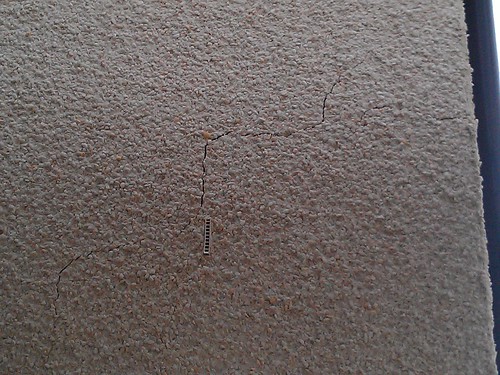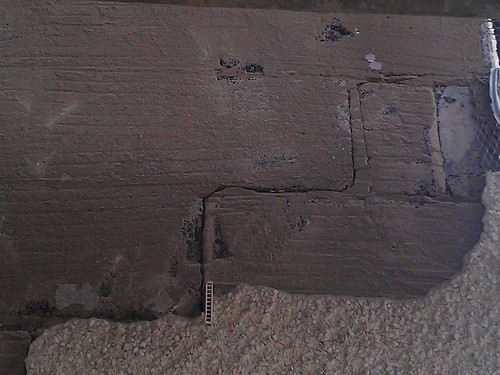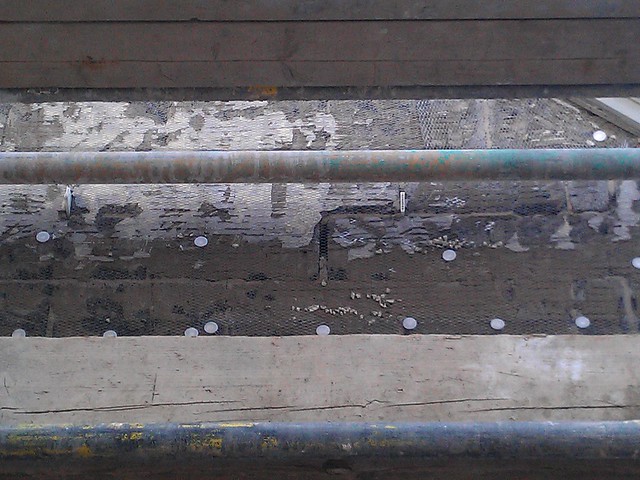Hi,
Last year I bought a new build semi (it was built approximately 18 months ago). It is timber framed with rendered brick exterior. The gable end has now developed a number of cracks in the render -- this is affecting both ends of this house, and the one next door (four properties in all).
The builders are now stripping the affected render off, and their plan appears to be to nail "chickenwire"-style reinforcement to the blocks before rendering again.
I am concerned that the mortar used was either unsuitable or incorrectly applied, as it is loose in places. I'm wondering if the builder is just attempting to cover up the problem with a botch, or if I am worrying unnecessarily?
I have a number of pictures here .
The biggest crack is at the right (rear) of the gable end between the ground/first floors:

After the render was taken off:

Loose mortar:

This appears to be the extent of their planned repairs (picture of next door):

Thanks for any advice,
David
Last year I bought a new build semi (it was built approximately 18 months ago). It is timber framed with rendered brick exterior. The gable end has now developed a number of cracks in the render -- this is affecting both ends of this house, and the one next door (four properties in all).
The builders are now stripping the affected render off, and their plan appears to be to nail "chickenwire"-style reinforcement to the blocks before rendering again.
I am concerned that the mortar used was either unsuitable or incorrectly applied, as it is loose in places. I'm wondering if the builder is just attempting to cover up the problem with a botch, or if I am worrying unnecessarily?
I have a number of pictures here .
The biggest crack is at the right (rear) of the gable end between the ground/first floors:

After the render was taken off:

Loose mortar:

This appears to be the extent of their planned repairs (picture of next door):

Thanks for any advice,
David

